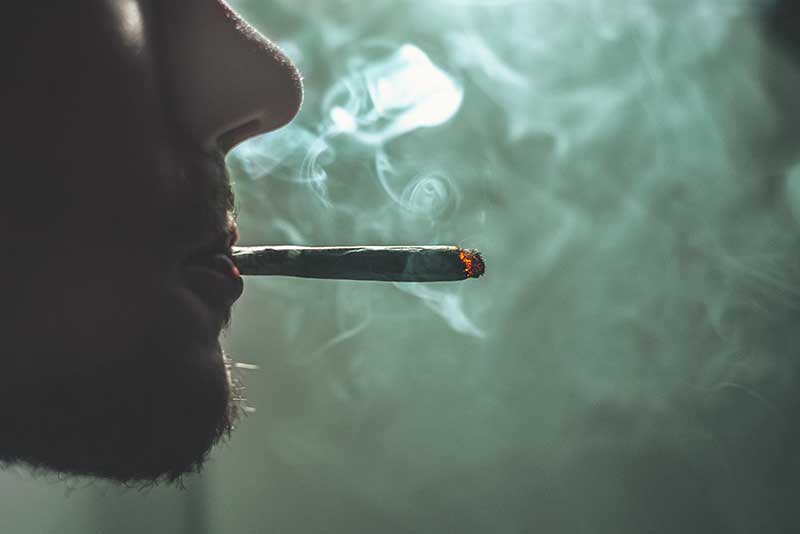 Balochistan
Balochistan
The flourishing narcotics industry
According to World Drug Report, 2023, published in June by the United Nations Office on Drugs and Crime (UNODC)
The bulk of global illicit opium production continues to take place in a limited number of countries, notably in Afghanistan. In 2022, production in Afghanistan reached 6,200 tons, equivalent to 80 per cent of the estimated global production (7,800 tons), and was followed in volume by Myanmar (795 tons) and Mexico (504 tons - latest data available for 2019/2020). Although the global area under opium poppy cultivation increased by more than 26 per cent from the previous year, primarily linked to increases reported from Afghanistan (32 per cent) and Myanmar (33 per cent), global opium production declined marginally (3 per cent) over the same period. This was due to less opium being produced in Afghanistan (10 per cent less) as a consequence of droughts in early 2022. The 2023 opium harvest in Afghanistan may see a drastic drop following the 2022 national drug ban, with possible global consequences. Early reports suggest reductions in poppy cultivation in Afghanistan. Time is needed to determine whether trends hold and the effect that may have on global heroin markets, especially those sourced by opium from Afghanistan.
The tragedy of Afghanistan, which is among the world's poorest and most underdeveloped nations, is compounded by narcotics, in combination with the failure of institution-building, bigoted political authority, a gaping trust deficit, the myopia of international aid groups, and lack of consensus.
It was reported on May 31, 2023, that drug cartels in Afghanistan maintain a symbiotic relationship with the Taliban, giving farmers advances to plant ephedra and poppy, while also providing finances to keep the "jihadist proto-state alive”. Moreover, drug cartels use Pakistani sources to facilitate the acquisition of chemicals required to produce drugs. Besides, diverse nationalities are used as hostages until their cartels can afford to pay for the delivery of the drugs and, in return, terrorist groups offer security services in exchange for payment.
Although the Taliban announced a ban on poppy cultivation, use and trafficking in April 2022, the policy is not reflected in practice. Independent sources confirm that the cultivation of poppy is in full swing, since there are no other sources of adequate income across vast regions of the country. Since the illegal opium trade also offers substantial revenues for the cash-strapped Taliban administration, it has been reluctant to enforce its embargo. Between USD 1.8 billion and USD 2.7 billion, or 12 to 14 per cent, of Afghanistan’s GDP was attributed to the production of opium in 2021.
Further, according the UNDOC Research Brief Opium Cultivation in Afghanistan, published in November 2022, the income made by farmers from opium sales tripled from USD 425 million in 2021 to USD 1.4 billion 2022 – the equivalent of 29 per cent of the 2021 agricultural sector’s value. Opium cultivation in Afghanistan increased by 32 per cent over the previous year (2021), to 233,000 hectares, making the 2022 crop the third largest area under opium cultivation since monitoring began. Opium cultivation continued to be concentrated in the south-western parts of Afghanistan (accounting for 73 per cent), where the largest increases took place, followed by the western provinces (accounting for 14 per cent). Increases in opium cultivation were observed in almost all major opium poppy cultivating provinces; most importantly in Badghis in the west. Opium poppy cultivation also continued to be concentrated in the south-western provinces of Afghanistan – Nimroz, Kandahar, Helmand, Uruzgan and Zabul – which together accounted for 73 per cent of the total area under opium poppy cultivation.
In some regions of Afghanistan, opium poppy cultivation occupied a significant proportion of overall agricultural land. In Helmand province, for instance, one-fifth of arable land was dedicated to opium poppy. In some Districts the proportion was even higher, taking away fields from vitally important food crops, including wheat.
Ironically, the official position of the Taliban regime is strongly anti-narcotics, and in a political eyewash the regime periodically reiterates its anti-narcotics 'policy'. On May 6, 2023, a Counter-Narcotics Department of the Ministry of Interior Affairs statement declared that over 1,670 acres of poppy farmlands had been destroyed in the six provinces of the country. The statement claimed,
300 acres of poppy farmlands in the Spinghar and Nazyan districts of Nangarhar, 296 acres of poppy farmlands in the Kishim district of Badakhshan, 255 acres of poppy farmlands in Uruzgan, 73 acres of poppy farmlands in Nuristan, 184 acres of poppy farmlands in Laghman, 39 acres of poppy farmlands in Baghlan and 40 acres of poppy farmlands in other provinces of the country have been eradicated by the counter-narcotics personnel.
Earlier, on March 18, 2023, Taliban 'supreme leader' Mullah Hebatullah Akhundzadeh issued a decree via Twitter that "the cultivation of marijuana is absolutely prohibited in the whole country, and after this, no one can plant marijuana (Narcotics/drugs) on their land, and if they plant marijuana on their land, their cultivation will be destroyed." As a part of this decree, the Judicial Institutions of the Taliban were also ordered to punish violators in accordance with the Shariat. Additionally, Akhundzadeh directed the Taliban's Ministry of Internal Affairs and other investigative divisions to bring the perpetrators before the courts.
ISome sources claim dramatic success for these efforts. According to a June 6, 2023, Alcis press release,
The Taliban have successfully reduced poppy cultivation by more than 99% in Helmand Province, which previously produced more than 50% of the country's opium… Opium cultivation in the south of the country down by at least 80% compared with last year, when the Taliban banned the growing of poppies for opium.
At the same time, however, a diversification of narcotics production is taking place in Afghanistan, with the rise of the production of methamphetamine (meth/crystal meth) and other drugs. As reported on June 25, 2023, Afghanistan remains as one of the world's largest producers of heroin and methamphetamine, most of it smuggled abroad. However, the country is also home to nearly 4 million drugs users, or close to 10 per cent of the total population. A February, 2023 report suggests that Ephedra, a common herb that is locally known as "Oman," is sold by harvesters in local markets and is then processed in hundreds of meth labs across Afghanistan. The drug, which has the appearance of white crystals, is then smuggled to neighbouring countries, from where it eventually reaches Europe and North America. The crystal-meth industry in Afghanistan took off around 2017, when drug traffickers discovered that the native ephedra herb could be used to make ephedrine, the key ingredient in crystal meth. For decades, Afghanistan has been the world's biggest producer of opium, but experts now say the country has also become a significant supplier of crystal meth. The meth industry is booming despite a Taliban ban on cultivation, production, and trafficking of all illicit narcotics. Graeme Smith, a senior consultant for the International Crisis Group (ICC), notes, "The narcotics industry and other informal aspects of the economy appear to be serving as a safety net for the vast numbers of Afghans thrust into poverty since the Taliban takeover…"
Najib Ahmadi, a former senior Afghan counternarcotics official, says that during its insurgency the Taliban was against the production of meth and banned it in areas it controlled. The group, he says, feared that meth would weaken its income from taxing opium cultivation and heroin trafficking. "[But] the production of meth has increased after the Taliban returned to power," he said. "Meth is now being processed in all corners of the country." Ahmadi adds that most of the meth in Afghanistan was produced in the country's western and northern provinces.
In reality, a major source of the Taliban’s income still come from the production and trafficking of heroin and methamphetamine. The Taliban generates its maximum revenues from collecting taxes from poppy plantations, extraction units, and smuggling networks. Both poppy production and the methamphetamine industry are expanding rapidly, and satellite imagery shows significant growth under Taliban rule. Numerous meth labs have appeared just over the last few years. The shift from heroin took place when it was realised that methamphetamine can be produced at a cheaper rate. The production thus, began in areas where wild ephedra plants grew, particularly in the highlands of south and south-east Afghanistan. The drug lords understood that ephedra plants, which grew in the wild, were readily available in the market, and the authorities were turning a blind eye to the trade.
Afghanistan is the core of the Golden Crescent, which also includes Pakistan and Iran. The Golden Crescent region serves as the starting point for three distinct heroin trafficking pathways. Most of the Afghan heroin trafficked to Europe travels via the Balkan Route, via Iran and Turkey. The Russian Federation and Central Asia receive heroin via the Northern Route, through Tajikistan and Kyrgyzstan. The southern route, which traffics heroin to Iran and Pakistan and from these nations to other areas of the world through sea and air, has emerged as a result of intensified law enforcement along the two other routes.
Pakistan plays a vital role in the distribution of narcotics produced in Afghanistan throughout the world. Traditionally, the Torkham border crossing, Kunjrab, Ghulam Khan, and Karachi, comprise the drug trade route from Afghanistan, through Pakistan and onward to the rest of the world. However, some 62 alternate drug trafficking routes pass via Pakistan's Balochistan province as a result of increased security. Road trafficking is used to bring contraband into Iran, Turkey, and then to Europe. A sea route through Balochistan's Chaman, Nushki, Turbat, Chagai, Panjgur, and Gwadar Districts to the United Arab Emirates, Saudi Arabia, Africa, across the rest of South Asia. High-end drug cartels have a third, more exclusive alternative at their disposal, the air route.
The drug trade from Afghanistan through Pakistan remains unrestricted, mostly due to weak investigation procedures and lenient court rulings that allow drug smugglers to evade significant punishment.
Further, a July 1, 2023, report asserts that, according to Afghan farmers, opium cultivation has increased since 2021, despite the Taliban’s prohibition. Moreover, there was no decrease in heroin seizures in Pakistan and the surrounding areas during the COVID-19 pandemic's 2020 timeframe, indicating that heroin manufacturing and trafficking were not hampered by the outbreak. At the same time, although volumes were higher, fewer shipments were routed through Pakistan. It is anticipated that similar quantities of precursor chemicals will continue to be smuggled via the Pakistan-Afghanistan border.
The production and trafficking of narcotics is also a lucrative cottage industry for the common people of Afghanistan, particularly crucial to survival at a time of enveloping economic crisis. Generations of Afghans have not seen peace in their lifetime, leaving the country riven by war, economically ravaged and socially fragmented. Despite the efforts of some western agencies to whitewash the Taliban regime, ignoring its brutality and criminality, Afghanistan remains the most important source and conduit of illegal narcotics for the world.
Support Our Journalism
We cannot do without you.. your contribution supports unbiased journalism
IBNS is not driven by any ism- not wokeism, not racism, not skewed secularism, not hyper right-wing or left liberal ideals, nor by any hardline religious beliefs or hyper nationalism. We want to serve you good old objective news, as they are. We do not judge or preach. We let people decide for themselves. We only try to present factual and well-sourced news.







